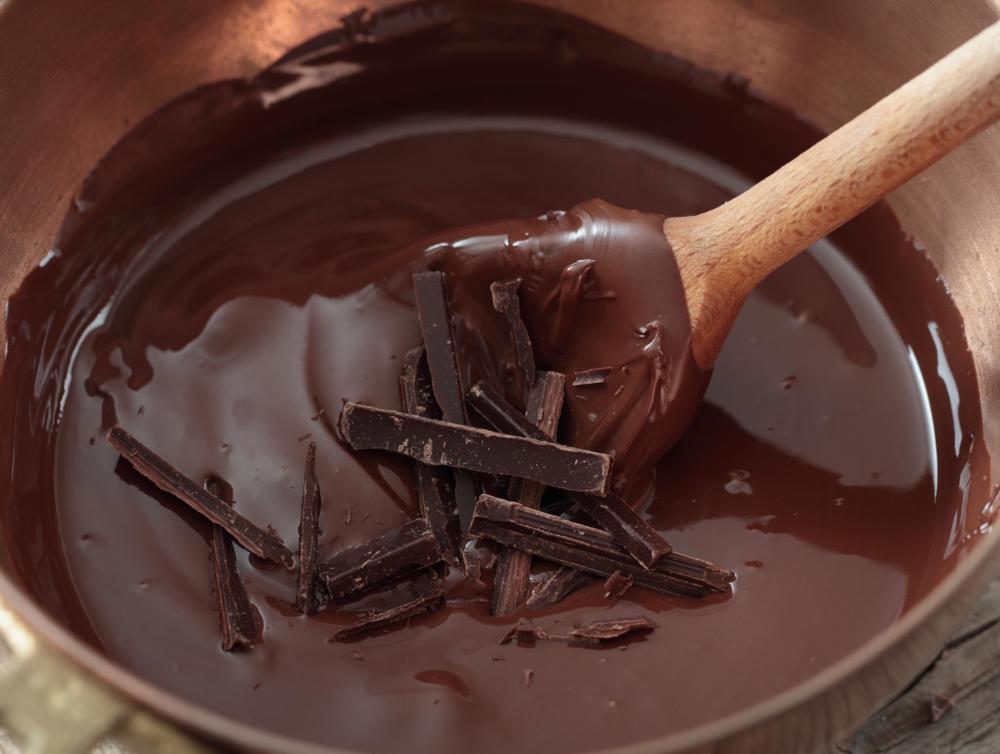At DelightedCooking, we're committed to delivering accurate, trustworthy information. Our expert-authored content is rigorously fact-checked and sourced from credible authorities. Discover how we uphold the highest standards in providing you with reliable knowledge.
What Is Compound Chocolate?
Compound chocolate is a confectionery ingredient that serves as an alternative to other types of baking chocolate. This non-chocolate product is typically made from a mixture of certain vegetable fats, cocoa powder, and sweetening agents. This type of chocolate is generally available at lower prices, and it does not require the same kind of tempering process as chocolate made with cocoa butter and chocolate liquor. Compound chocolate coating is frequently used for some brands of candy bars as well as for filling in some types of cookies.
Any kind of chocolate needs an added source of fat to hold the rest of its ingredients together as well as to give the chocolate its taste and texture. Pure cocoa butter added to chocolate results in a shiny surface and rich quality once a baker correctly tempers and cools the chocolate. Compound chocolate generally includes no cocoa butter and instead uses oil-based vegetable additives such as palm or coconut oil as fat substitutes. This confectionery chocolate can also contain vegetable butters with more solid consistencies; these are commonly known as non-lauric fats.

During preparation, compound chocolate is usually heated to roughly 37° F (about 3° C) above its melting point before being poured over the candy filling of choice. While some bakers report that higher quality tempered chocolate is a better choice for many types of desserts, others point out that many varieties of compound chocolate work just as well for most recipes as long as the ingredient is heated and cooled correctly. One of the most common problems with compound chocolate is a dull surface finish; this often happens when excess moisture is present during the cooling process. This issue can happen particularly frequently with the use of a candy bar enrobing machine that is not maintained at a consistent internal cooling temperature.

Non-lauric fats in compound chocolate can also sometimes affect the finished texture if it is inadvertently heated too much. Since this type of cocoa butter substitute has a thicker consistency than palm oil or coconut oil, it can easily cause the chocolate to become greasy if its temperature reaches more than a few degrees above the melting point. Even after cooling, it can often retain the same greasy texture on the chocolate's surface. Baking with non-lauric fats in this kind of chocolate therefore requires particular attention to temperature readings, ideally with the use of a candy thermometer.
AS FEATURED ON:
AS FEATURED ON:












Discussion Comments
My daughter lived in Ireland for several years, and when she came back to the states she would always bring me the best chocolate. Knowing how much I love good chocolate, this was always a special treat for me.
To me there is a big difference between good and great chocolate. There are a lot of different types of chocolate, but once you get used to high quality ingredients, you notice the difference. The best chocolate I have found locally without going to a specialty shop is Toblerone. I can usually find this at Target, and I think it is good tasting chocolate.
As a lover of chocolate, I think I will stick with the real thing instead of using a chocolate compound. I love the taste of a good chocolate and have grown to really enjoy dark chocolate. I have probably had compound chocolate and didn't even realize it, but wonder why you would want to use oils instead of the real thing?
Post your comments